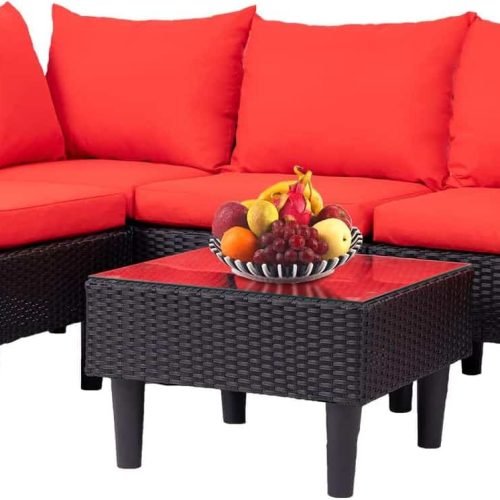Breaking It Down: 12 Best Types of Organic Mulch
In the world of gardening, organic mulch is key. This article explores the 12 best types of organic mulch for a healthy garden. Organic mulch does more than look good; it protects and feeds the soil. It helps keep the garden balanced and fights off environmental problems.
By looking at different mulches, we see their many benefits. They are vital for keeping the soil alive in organic gardens.

Key Takeaways
- Organic mulch supports soil health and moisture retention.
- It helps in regulating soil temperature and protecting plant roots.
- Different types of mulch serve unique purposes in the garden.
- Using organic mulch can significantly reduce weed growth.
- Incorporating mulch into sustainable gardening practices enhances ecological balance.
- Applying the right mulch at the right time is crucial for effectiveness.
Understanding Organic Mulch and Its Importance
Organic mulch is key in gardening and landscaping. It makes gardens look better and work better. It helps plants grow strong and healthy.
What is Organic Mulch?
Organic mulch is made from things like leaves, wood chips, and grass clippings. It keeps the soil moist, stops weeds, and controls temperature. As it breaks down, it makes the soil better for plants.
Benefits of Mulch for Your Garden
Mulch does more than just look good. It keeps the soil wet, so you don’t have to water as much. It also keeps the soil warm, which helps plants grow. Plus, it adds nutrients to the soil as it breaks down.
How Organic Mulch Contributes to Soil Health
Organic mulch is great for the soil. It adds nutrients and improves the soil’s structure. This leads to better water retention and more life in the soil. Regular use of mulch keeps the soil healthy and supports many plants.

Breaking It Down: 12 Best Types of Organic Mulch
Choosing the right mulch for your garden is key to plant health and looks. Each organic mulch has its own benefits, fitting different gardening needs. Here, we explore twelve types, covering their sources, uses, and garden benefits.
Wood Chips
Wood chips are a top choice for mulching. They last long, keeping weeds down and soil moist. They’re perfect for landscape beds and tree areas, adding a natural charm.
Straw
Straw is a favorite in community gardens for its light weight and cost. It holds moisture well and is great for seedlings. As it breaks down, it enriches the soil.
Grass Clippings
Using grass clippings as mulch is a smart way to recycle lawn waste. They’re rich in nitrogen and decompose fast, feeding the soil. They’re excellent for vegetable gardens.
Leaf Mold
Leaf mold is made from decomposed leaves and is great for soil. It improves soil structure and water retention. Though it takes time to make, it’s worth it for the soil benefits.
Cocoa Shell Mulch
Cocoa shell mulch is fragrant and keeps weeds down while retaining moisture. It’s nutrient-rich but should be avoided around pets due to theobromine toxicity.
Pine Bark
Pine bark mulch is decorative and functional. It drains well and can lower soil acidity. It’s great for flower beds and around perennials.
Shredded Paper
Shredded paper is an eco-friendly mulch option. It’s light, absorbs moisture, and suppresses weeds. Use it in layers to avoid matting.
Compost
Compost is a two-in-one solution: it enriches soil and acts as mulch. The composting process creates nutrient-rich material that supports plant growth. It boosts microbial activity, making the soil healthier.
Hay
Hay is similar to straw but may have seeds. It’s good for vegetable gardens, retaining moisture and feeding the soil. Make sure to use seed-free hay to avoid unwanted growth.
Newspaper
Newspaper can be a useful mulch when layered correctly. It suppresses weeds and breaks down slowly, adding organic material to the soil. Wetting the sheets helps prevent them from blowing away.
Cardboard
Cardboard, from packaging, is a cost-effective mulch option. It suppresses weeds and enriches the soil as it decomposes. Remove glossy surfaces to ensure it breaks down well.

| Type of Mulch | Key Benefits | Ideal Uses |
| Wood Chips | Durability, weed suppression | Landscape beds, tree bases |
| Straw | Moisture retention, lightweight | Seedlings, vegetable gardens |
| Grass Clippings | Rich in nitrogen | Vegetable gardens |
| Leaf Mold | Improves soil structure | All garden types |
| Cocoa Shell Mulch | Fragrant, nutrients-rich | Flower beds |
| Pine Bark | Excellent drainage | Flower beds, perennials |
| Shredded Paper | Absorbent, recycled material | General garden use |
| Compost | Nutrient-rich, promotes microbial activity | All garden types |
| Hay | Moisture retention, soil feeding | Vegetable gardens |
| Newspaper | Weed suppression | Under shrubs, flower beds |
| Cardboard | Cost-effective, organic enrichment | Weed control, garden beds |
Mulching Tips for Effective Use
Using organic mulch in your garden can really help. It improves soil health, keeps moisture in, and controls weeds. To get the most out of it, follow these tips on how to apply, when to do it, and how to layer it.
How to Apply Organic Mulch
Start by removing weeds and debris around your plants. Spread a 2 to 4-inch layer of mulch around the base, but not touching the stems. Different plants need different depths, so adjust as needed.
Best Timing for Mulching
When you mulch matters a lot. Mulch in early spring to keep soil moist in warm weather. Mulching in late fall protects plants from cold damage. Stick to these times for the best results.
Layering Techniques for Optimal Benefits
Layering mulch can make it even better. Use coarse materials at the bottom and finer ones on top. This helps keep moisture in and adds nutrients. Try different layers to see what works best for your garden.
Integrating Organic Mulch into Sustainable Gardening Practices
Adding organic mulch to your garden does more than just help your plants. It fits well with many sustainable gardening practices. When you mix mulch with other organic gardening methods, your garden can flourish. Techniques like composting, crop rotation, and natural pest control all work better with mulch.
Combining Mulch with Other Organic Gardening Techniques
Organic gardening is all about a complete approach. Using organic mulch can make composting more effective. As mulch breaks down, it adds nutrients to the soil, helping plants grow. Mulch also helps keep the soil moist and prevents erosion, making your garden stronger.
Mulch and Natural Weed Control
Organic mulch is great for controlling weeds naturally. By placing mulch around plants, you block weeds and add nutrients as it breaks down. This cuts down on the need for harmful chemicals. It makes your garden healthier and more eco-friendly.
Conclusion
Mulch does more than just make gardens look good. It’s key to keeping gardens healthy and green. By using organic mulch like wood chips, straw, and compost, you can make the soil better, keep water in, and fight weeds.
Adding mulch to your garden is a big step towards organic gardening. It helps you learn how to care for your plants and the earth. By using the right mulch at the right time, you help your garden grow strong and support the environment.
Choosing the right organic mulch is important. It helps your plants thrive and makes your garden better for the planet. Start using organic mulch in your garden. It’s good for your plants and the earth.
FAQ
What is organic mulch?
Organic mulch is natural stuff put on soil to keep it moist, stop weeds, and make soil better. You can use wood chips, straw, grass clippings, and leaves.
What are the benefits of using mulch in my garden?
Mulch helps save water, keeps soil temperature right, and makes soil richer. It also fights weeds naturally. As it breaks down, it adds nutrients to the soil, making it healthier.
How does organic mulch help with soil health?
Organic mulch helps soil by breaking down and adding organic matter. This makes soil better at holding water and air, and gives plants the nutrients they need to grow well.
When is the best time to apply organic mulch?
Apply mulch after planting in spring or early summer. It’s also good in fall to protect plants and stop soil erosion.
What are the best practices for applying organic mulch?
Spread 2-4 inches of mulch around plants, but not touching stems. Replenish it as it breaks down. An even layer helps keep moisture and weeds away.
How can I integrate organic mulch with other sustainable gardening practices?
Use mulch with composting, crop rotation, and natural pest control. For example, mulch with compost to boost nutrients. Mulch also reduces weeds, helping your garden grow better.
Is cocoa shell mulch safe for my garden?
Cocoa shell mulch smells nice but has theobromine, toxic to pets. If you have pets, pick safer mulch options.
Can I use grass clippings as mulch?
Yes, grass clippings are great mulch. They break down fast, add nutrients, and keep soil moist. Just dry them a bit first to avoid smothering plants.
What types of organic mulch are best for vegetable gardens?
Straw, grass clippings, and shredded leaves are best for veggies. They break down well, add nutrients, and control weeds. They also help the soil and keep it healthy.






